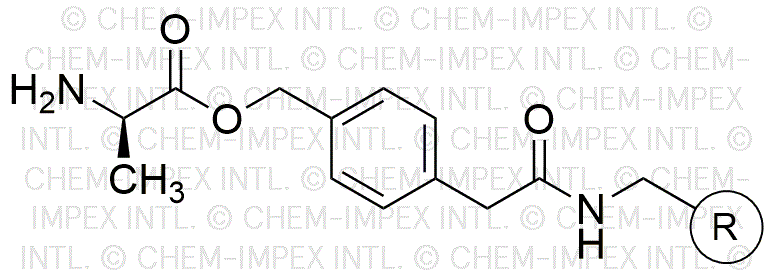Boc-D-alanine 4-oxymethylphenylacetamidomethyl is widely utilized in research focused on:
- Peptide Synthesis: This compound serves as a protective group in the synthesis of peptides, allowing for selective reactions and enhancing the yield of desired products.
- Drug Development: It plays a role in the design of pharmaceutical compounds, particularly in creating analogs of amino acids that can lead to new therapeutic agents.
- Bioconjugation: The compound is used in bioconjugation processes, facilitating the attachment of biomolecules to drugs or imaging agents, improving their efficacy and targeting.
- Research in Neuroscience: It aids in the study of neurotransmitter systems by acting as a building block for compounds that can modulate receptor activity.
- Material Science: The compound can be incorporated into polymers to create materials with specific properties, such as enhanced biocompatibility for medical devices.
General Information
Properties
Safety and Regulations
Applications
Boc-D-alanine 4-oxymethylphenylacetamidomethyl is widely utilized in research focused on:
- Peptide Synthesis: This compound serves as a protective group in the synthesis of peptides, allowing for selective reactions and enhancing the yield of desired products.
- Drug Development: It plays a role in the design of pharmaceutical compounds, particularly in creating analogs of amino acids that can lead to new therapeutic agents.
- Bioconjugation: The compound is used in bioconjugation processes, facilitating the attachment of biomolecules to drugs or imaging agents, improving their efficacy and targeting.
- Research in Neuroscience: It aids in the study of neurotransmitter systems by acting as a building block for compounds that can modulate receptor activity.
- Material Science: The compound can be incorporated into polymers to create materials with specific properties, such as enhanced biocompatibility for medical devices.
Documents
Safety Data Sheets (SDS)
The SDS provides comprehensive safety information on handling, storage, and disposal of the product.
Product Specification (PS)
The PS provides a comprehensive breakdown of the product’s properties, including chemical composition, physical state, purity, and storage requirements. It also details acceptable quality ranges and the product's intended applications.
Certificates of Analysis (COA)
Search for Certificates of Analysis (COA) by entering the products Lot Number. Lot and Batch Numbers can be found on a product’s label following the words ‘Lot’ or ‘Batch’.
*Catalog Number
*Lot Number
Certificates Of Origin (COO)
This COO confirms the country where the product was manufactured, and also details the materials and components used in it and whether it is derived from natural, synthetic, or other specific sources. This certificate may be required for customs, trade, and regulatory compliance.
*Catalog Number
*Lot Number
Safety Data Sheets (SDS)
The SDS provides comprehensive safety information on handling, storage, and disposal of the product.
DownloadProduct Specification (PS)
The PS provides a comprehensive breakdown of the product’s properties, including chemical composition, physical state, purity, and storage requirements. It also details acceptable quality ranges and the product's intended applications.
DownloadCertificates of Analysis (COA)
Search for Certificates of Analysis (COA) by entering the products Lot Number. Lot and Batch Numbers can be found on a product’s label following the words ‘Lot’ or ‘Batch’.
*Catalog Number
*Lot Number
Certificates Of Origin (COO)
This COO confirms the country where the product was manufactured, and also details the materials and components used in it and whether it is derived from natural, synthetic, or other specific sources. This certificate may be required for customs, trade, and regulatory compliance.

